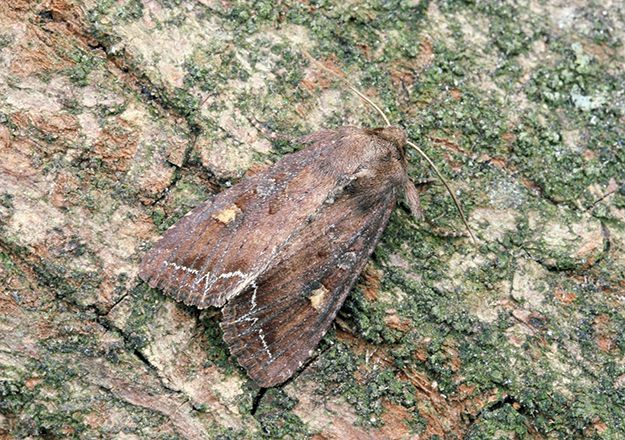- info@sirhowyhillwoodlands.co.uk
- Thomas Ellis Way, Tredegar NP22 4QF
- About Us
- Get involved
- Visit Us
Visit Tredegar & our Woodlands
Come and visit us!
Sirhowy Hill Woodland
Thomas Ellis Way
Tredegar
Blaenau Gwent
NP22 4QF - Wildlife
- Woodland Shop
Latest and greatest products, direct from our
Woodland Shop
Sourced from the Woodlands and the local community.
You have
item(s) in your bag
- Home
- /
- Blog
- /
- Animals & Wildlife
- /
- Moths
- /
- Bright-line Brown-eye

Scientific name: Lacanobia oleracea
Bright-line Brown-eye
May to late July with a second generation in the south from August to September. Common to England, Wales and Ireland but less frequent in the far north.
The forewings are uniformly brown in colour with a fine white outer cross-line forming a W (the bright-line) and an orange blotch kidney-mark (the brown-eye).
The larvae can be found from June to October, feeding at night. They then overwinter as pupae underground.
What does the Bright-line Brown-eye eat?
The Bright-line Brown-eye eats a wide range of wild and cultivated herbaceous and woody plants including Common Nettle (Urtica dioica), Fat-hen (Chenopodium album), willowherbs, St John’s-worts, Traveller’s-joy (Clematis vitalba), English Elm (Ulmus procera), Hazel (Corylus avellana) and Hop (Humulus lupulus). Also occasionally a pest to tomoatoes, fedding inside the fruit.
What habitat does the Bright-line Brown-eye live in?
The Bright-line Brown-eye can be found in most habitats. They are also abundant in gardens and other cultivated land and also frequent on heathland and the edges of saltmarshes.
What family does the belong to?
The Bright-line Brown-eye belongs to the Noctuidae family.

Click to view more
Statistics
Scientific Name
Lacanobia oleracea
Location
England, Wales, Scotland and Ireland
Size
Small sized
Wingspan Range: 28-38mm
Population
Common

Other Wildlife







